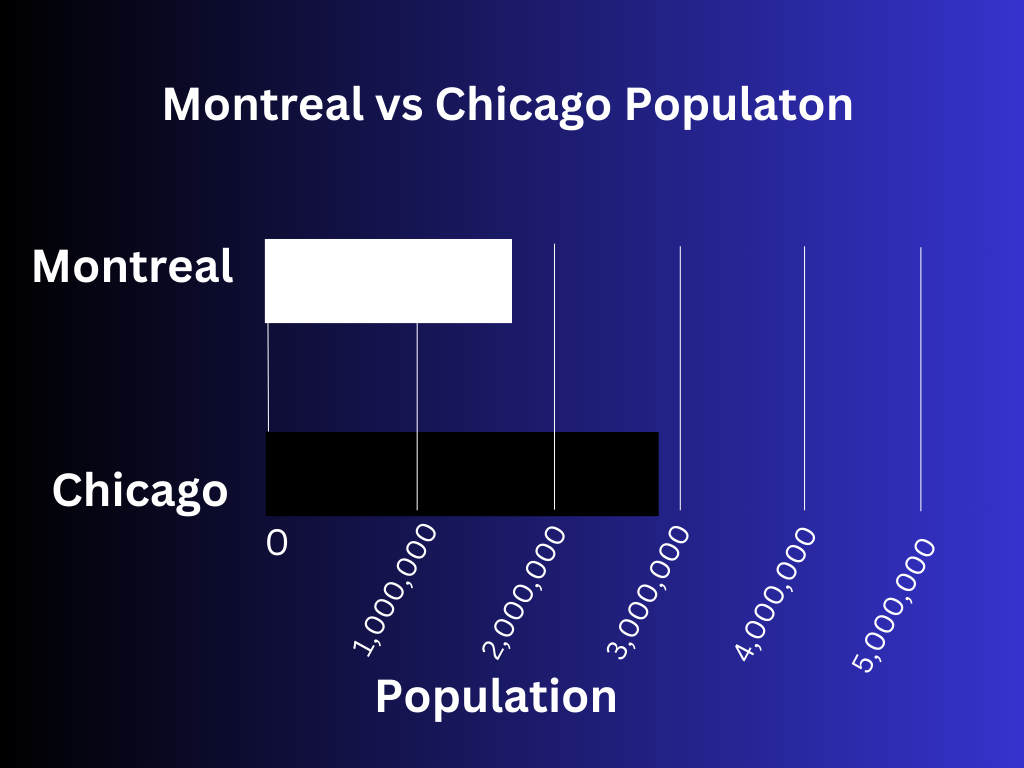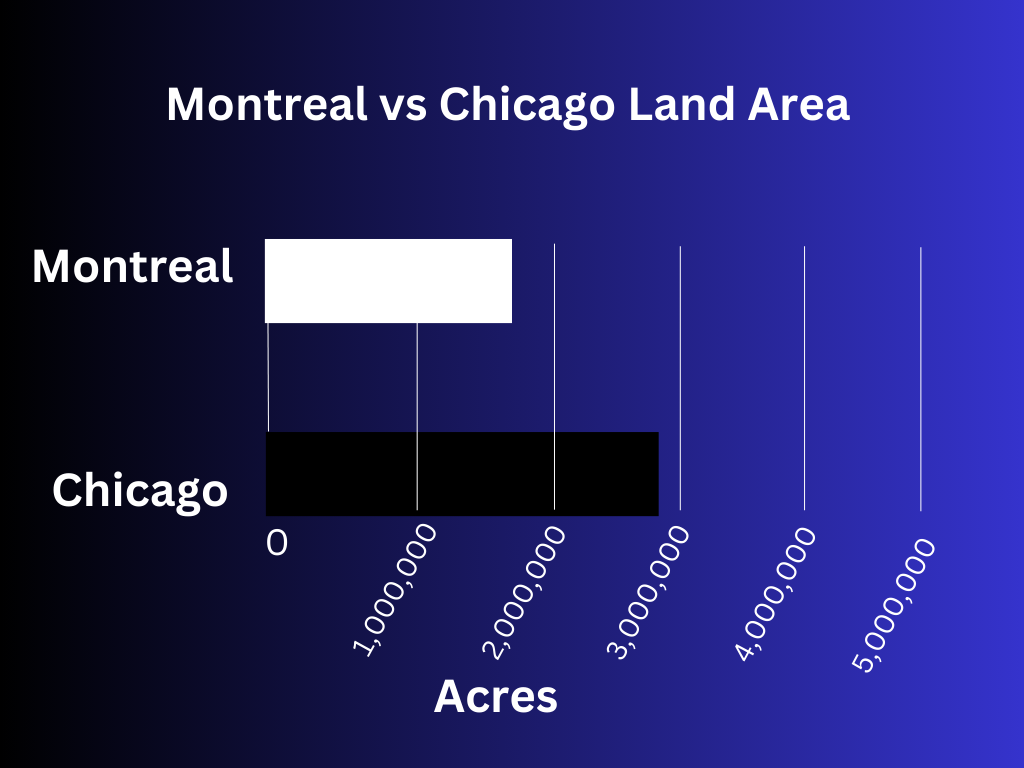
When it comes to vibrant urban centers, Montreal and Chicago are two iconic cities that often come to mind. Both boasting rich histories, diverse cultures, and a wide array of attractions, these metropolises have carved their unique places on the world stage. In this blog post, we will delve into the statistics of Montreal and Chicago, focusing on population, area, and population density, to gain a better understanding of how these two cities compare.
Population

Montreal, the largest city in the province of Quebec, Canada, is home to a population of approximately 1,762,949 residents. On the other side of the border, Chicago, a major city in the state of Illinois, USA, has a larger population of approximately 2,746,388 inhabitants. While both cities boast significant numbers, Chicago takes the lead in terms of population.
Area

The land area covered by a city can significantly impact its urban layout and development. Montreal stretches over an expanse of 106,625.97 acres, encompassing a diverse mix of neighborhoods and landmarks. In comparison, Chicago boasts a larger land area of 150,101.693 acres, giving it room to accommodate various districts, parks, and infrastructure.
Population Density
| State | Area (acres) | Population | Population Density (KM2) |
| Montreal | 106,625.97 | 1,762,949 | 4,828.3 |
| Chicago | 150,101.693 | 2,746,388 | 4,656.33 |
While population and area provide valuable insights into a city’s size, population density paints a more nuanced picture of urban living. Montreal’s population density stands at 4,828.3 residents per square kilometer, reflecting a vibrant and moderately dense urban landscape. Conversely, Chicago’s population density is slightly lower, with approximately 4,656.33 residents per square kilometer. This indicates that Chicago offers a more spread-out living environment despite its larger population.
Comparing Lifestyle and Culture
Beyond the numbers, both Montreal and Chicago offer unique lifestyles and cultural experiences. Montreal’s French-Canadian heritage is evident in its architecture, cuisine, and festivals, making it a city of arts and joie de vivre. Meanwhile, Chicago’s diverse population contributes to a dynamic cityscape, renowned for its blues and jazz music, iconic architecture, and deep-rooted sports culture.
Economic Factors
Economic strength is a crucial aspect when comparing cities. Chicago’s larger population and expansive economy have positioned it as a global financial hub, boasting a diverse range of industries from finance and technology to manufacturing and healthcare. Montreal, while smaller in population, has a thriving economy with a focus on aerospace, technology, and creative industries.
Climatic Differences
Climate plays a significant role in shaping the lifestyle and activities of a city’s residents. Montreal experiences four distinct seasons, including cold winters and warm summers, making it a hub for winter sports and outdoor festivals. On the other hand, Chicago’s climate is also marked by four seasons but is influenced by the Great Lakes, often resulting in milder winters and occasionally hot summers.
Is Montreal Bigger Than Chicago
In conclusion, Montreal and Chicago are two remarkable cities, each with its own unique charm and allure. While Chicago boasts a larger population and land area, Montreal thrives with its rich cultural heritage and artistic flair. Population density reveals that both cities offer distinct urban experiences, catering to different preferences. Economic factors and climatic conditions further add to the cities’ uniqueness, making them standout destinations for residents and visitors alike.
With their vibrant histories, cultural diversity, and economic prowess, Montreal and Chicago undoubtedly hold their places among the world’s most fascinating cities.
